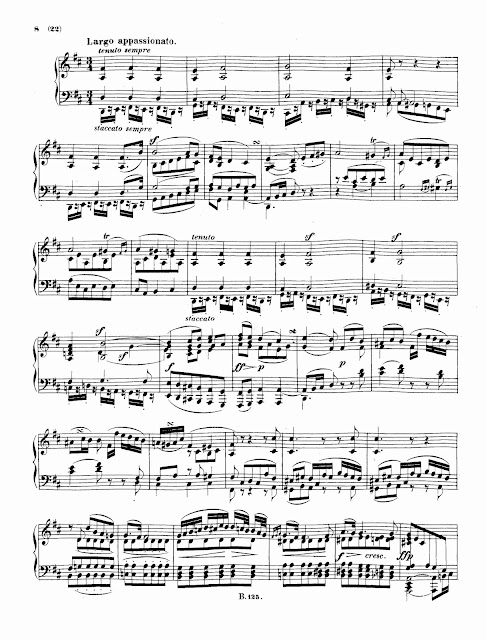DXXXIX. BEETHOVEN, Ludwig van (1770-1827)
Beethoven's first years in Vienna brought him fame as a superb pianist, but as he finished his studies -- first with Haydn, then Albrechtsberger -- he carefully plotted out the timing of bringing his own mighty compositions to the attention of Vienna musical society.
The three sonatas of Opus 2 (F Minor, A Major, C Major -- hey, a triad!) were extraordinarily new and exciting music. From here onwards, Beethoven's reputation as a composer grew exponentially.
First movement
Such simplicity encapsuled in such beauty. Beethoven tiptoes down the stairs, rises again with a pure tonic scale, and then -- in both voices -- introduces sweeping 16th-note triplets that sounds like a swarm of bees aflight ...
A gorgeous Largo with the melody in the bass, sounding like a pizzicato cello!
A typical scherzo/trio in A Major and A Minor:
A brilliant rondo featuring rocketing motifs -- like shooting stars -- which will reoccur throughout the movement:
Beethoven concludes -- not with a bang after all the excitement -- but a quiet peaceful whimper:













No comments:
Post a Comment